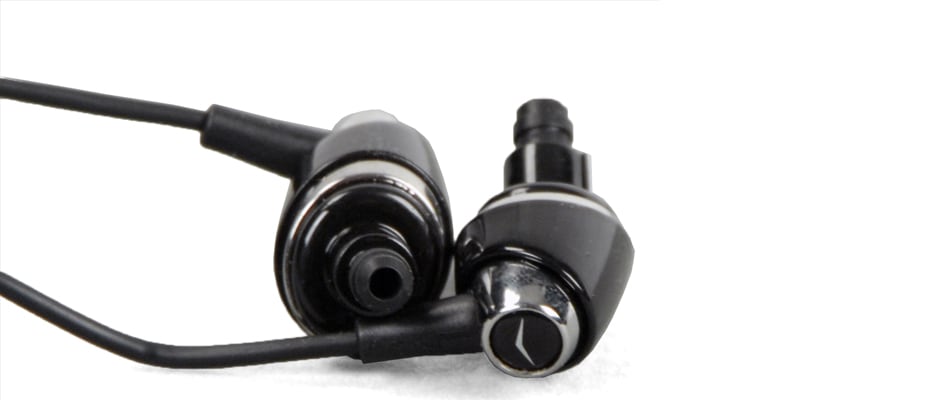Introduction
Product Overview
{{section_header}}{{section.name}}{{/section_header}}
Get to know the Klipsch S4is.
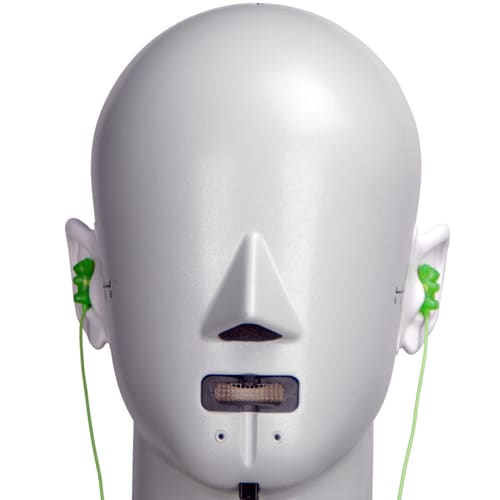
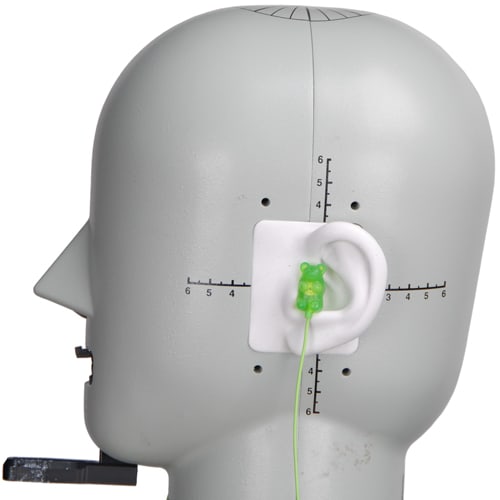
Speakers
{{section_header}}{{section.name}}{{/section_header}}
Here we see the tiny opening to the speaker element, right down the nozzle of the S4is. While there isn't much here to guard against bio matter, the opening to the nozzle is small enough to avoid most canal-mounted earwax.
Back
{{section_header}}{{section.name}}{{/section_header}}
Because the {{product.name}}s are so small, there really isn't a whole lot to look at on the backs, but the branding to the venerable earbuds is prominently displayed on their tiny metal and plastic bodies.
Cable
{{section_header}}{{section.name}}{{/section_header}}
Running from the two earbuds is a standard y-shaped cable that is 3.94 feet long, and fairly thinly insulated. This type of wire tangles easily, so be careful.
At the end of that cable is a standard 1/8th inch jack, perfect for smartphones, iPods, and tablets.
While those on the {{product.name}} are tiny, it is always a plus to have cableguards. They'll survive a little bit of tugging, but don't go crazy trying to yank these out of your ears.
Additional Features
{{section_header}}{{section.name}}{{/section_header}}
If the pre-installed sleeves don't fit your ears, there are additional sizes for you to try out, all but guaranteeing a better fit than many entry-level in-ears.
In the Box
{{section_header}}{{section.name}}{{/section_header}}
Along with your headphones, the packaging for the {{product.name}} includes 3 additional sizes of sleeve, documentation, a metal carrying case, and a clip.
Durability
{{section_header}}{{section.name}}{{/section_header}}
Due to the {{product.name}}s being on the more affordable end of things, it's not terribly surprising that there are no major durability features, and quite a few concerns. Namely, they have rather small cableguards, thin wire, and are unable to be repaired should something happen to them.
Aesthetics
{{section_header}}{{section.name}}{{/section_header}}
Because the {{product.name}}s stick into your ear and don't really scream for attention, aesthetics are less important, but overall, they look the part of solid entry-level ear buds. They aren't ugly, and hide out quite nicely in your ear canal.
Frequency Response
{{section_header}}{{section.name}}{{/section_header}}
Not bad at all, Klipsch. For most of the range of audible frequencies, the {{product.name}}s are fairly even, though they definitely add their own flavor to your music by emphasizing bass frequencies quite a bit. Beyond that, the {{product.name}}s stay within our ideal limits well, save for a strange dip in the 8.5-10kHz range, meaning a very narrow range of cymbal attack will be muffled in comparison to the rest of your music, but you shouldn't notice any other blemishes.
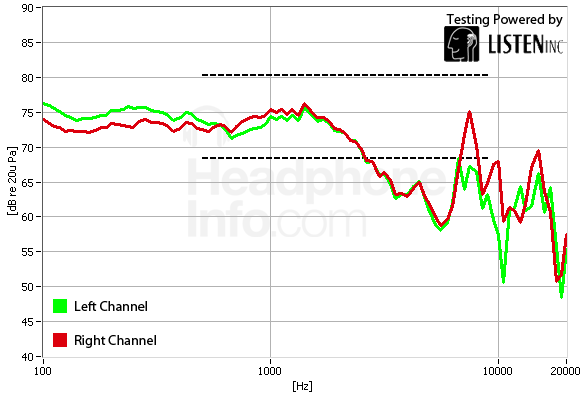
Click here for more information on our frequency response test.
Distortion
{{section_header}}{{section.name}}{{/section_header}}
The {{product.name}}s have a small spike in distortion, but it seems to be an isolated occurrence, and is overall not that concerning.
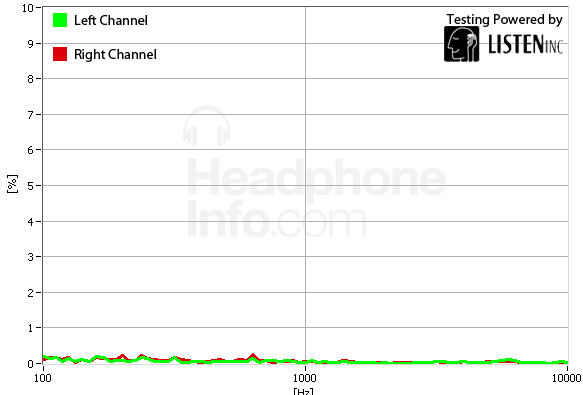
Click here for more information on our frequency response test.
Tracking
{{section_header}}{{section.name}}{{/section_header}}
While there are minor shifts in channel preference, you should never be able to hear them if you're listening to your music at volume. Great marks here.
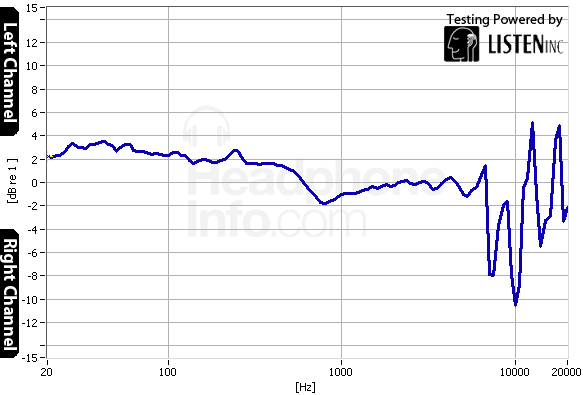
Click here for more information on our frequency response test.
Isolation
{{section_header}}{{section.name}}{{/section_header}}
Despite letting in low-frequency sounds in virtually unimpeded, the {{product.name}}s actually block out a considerable amount of sound in the high end. This is perfect for drowning out voices or other high-end noise.
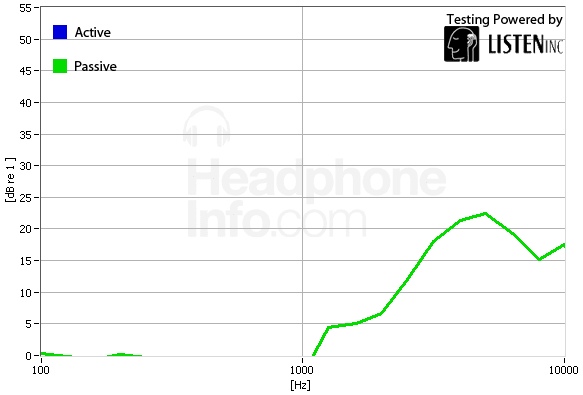
Click here for more information on our isolation test.
Leakage
{{section_header}}{{section.name}}{{/section_header}}
Not surprisingly, the {{product.name}}s keep a lid on their own noise quite well. Feel free to listen to whatever you like without annoying those around you. HeadphoneInfo and Reviewed.com assume no liability for your actions while dancing, grooving, or otherwise "getting down".
Click here for more information on our leakage test.
Maximum Usable Volume
{{section_header}}{{section.name}}{{/section_header}}
If you're a fan of loud music, you'll be happy to know that the {{product.name}}s can theoretically exceed the max output of your standard MP3 player without hitting the dreaded 3% distortion level. While 119.48dB seems like an impressive volume to listen to, we caution you that this can cause permanent hearing loss if you listen for too long, and you should probably avoid this.
Click here for more on our maximum usable volume test
Short-Term Use
{{section_header}}{{section.name}}{{/section_header}}
Due to the {{product.name}}'s in-ear design, you can expect some minor discomfort when you're finding out which sleeves fit you the best. Still, in-ears work by jamming into a tiny orifice that was never meant to see any foreign objects, so general discomfort isn't uncommon. Thankfully, the {{product.name}}s do take some of the pressure off of your ear canal and distribute their minimal weight onto your pinna.

Extended Use
{{section_header}}{{section.name}}{{/section_header}}
Over time, the fit doesn't change much assuming you have the correct sleeve size on your in-ears. Similar marks here.
Customizability
{{section_header}}{{section.name}}{{/section_header}}
Aside from adding the shirt clip for your cable and swapping out sleeves, there really isn't a whole heck of a lot that you can to do customize your headphones. Still, they're really tiny in-ears: you won't want to do much to them.
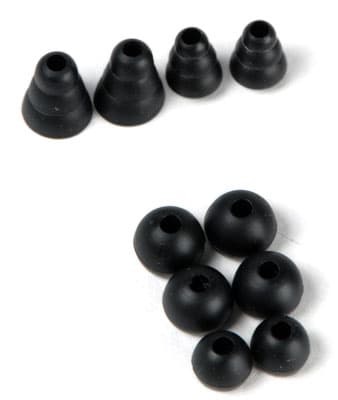
Cable Connectivity
{{section_header}}{{section.name}}{{/section_header}}
Due to the {{product.name}}s being designed to work with mobile devices, they have a standard (if boring) 1/8th inch plug. Their low impedance and high sensitivity means that they will not need a 1/4th inch adapter for a home setup, though you could buy one if you wanted to. The remote also allows you to use your headphones as a smartphone headset.
Portability
{{section_header}}{{section.name}}{{/section_header}}
Because the {{product.name}}s are not only small, but light, and they come with a carrying case, you'll be able to take them just about anywhere you want to. Aside from a pool. Don't listen to these underwater.
Maintenance
{{section_header}}{{section.name}}{{/section_header}}
As the {{product.name}}s are entry-level cans, there are some tradeoffs in the design, and many of them negatively impact their durability. While there are few common complaints for durability, if you break cables or anything else on the headphones themselves, you can't fix it. The remote adds a couple extra potential failure points at the soldering, but this is true for any headset.
Other Features
{{section_header}}{{section.name}}{{/section_header}}
Remote & Mic
Partway down the cable to the {{product.name}}s is the remote and microphone, allowing you the freedom to use your headphones as a smartphone headset. Adjust the volume, or pause your music to take a call. The remote works about as well as you'd expect, so don't expect any errors.
Sennheiser IE 8i
Design
From a design standpoint, the Sennheisers have all the bells and whistles like detachable ear buds, ear loops, and a ton of different sleeves. The Klipsch S4is on the other hand, have very few premium features, but get the job done. Still, you’re shelling out up to six times the money for the IE 8is.
Frequency Response
The Klipsch S4is do a bit better here, though both responses are extremely similar. They also stay within our ideal limits better.
Distortion
Neither has a huge problem with distortion, and the difference between the two is minor outside of the Klipsch S4i’s small peak.
Tracking
Both have great tracking for the most part, though the IE 8is do have a wild channel shift closer to 7kHz.
Isolation
Neither is very good at attenuating noise, but the Sennheisers do block out a wider range of outside sound than do the Klipsch S4is.
Comfort
While the fit of both relies more on your ear canals than any objective measure, the Sennheiser IE 8is are a bit heavier and bulkier than the Klipsch S4is, though they do take steps to redistribute their weight well. You’ll just have to see if you can try them on for yourself to determine the best fit for you.
Verdict
For $500 less than it takes to grab the Sennheiser IE 8is, you can pick up the Klipsch S4is which not only share a very similar performance, but they also are just as portable. They don’t have the same high-end options like removable/replaceable cables, or ear loops, but they make do without them. If you’re looking to save yourself some money, the Klipsch S4is aren’t a bad place to start.
V-Moda Vibrato Remote
Design
While both sets of headphones are very similar by design, the V-Moda in-ears offer an all-metal housing, as well as a kevlar weave to protect the cables from breaking or kinking, which is a huge plus in terms of durability. The Klipsch S4is do not have these features, but both sets can be used as smartphone headsets.
Frequency Response
Oddly enough, the frequency responses of both sets of headphones are remarkably similar, save for the Vibrato Remotes’ overemphasis in the high end. You can’t go wrong with either here.
Distortion
Both have a very low level of distortion, save for a strange peak on the Klipsch S4is. It’s inaudible, so don’t fret.
Tracking
Both have great tracking.
Isolation
The V-Moda in-ears block out a bunch more sound from the outside world than do the Klipsch S4is.
Comfort
This one’s tricky, though both are very similar in that they are tiny in-ear headphones with several sleeve sizes for you to choose from. Both have similarly-sized nozzles, meaning the fit should be very similar. Still, if you get a chance, try ’em on first to see if there really is that much of a difference for you.
Verdict
While the V-Modas do provide a slight performance and durability bump, the Klipsch S4is shows it can hang with the best of them. Still, for the extra money you’d pay for the Vibrato Remotes, you’re getting something, but if you’re on a budget, the Klipsch S4is are still the best bang for your buck.
Etymotic Research Mc5
Design
The Klipsch S4is have a remote, can be used as a smartphone headset, and are a bit more durable than the mc5s. On top of that, their carrying case offers more protection from the world. On the other hand, they are also a bit more expensive.
Frequency Response
Both have a great frequency response, but they’re suited to different listeners. For example, the fan of bass-heavy music will like the Klipsch S4is better, but the techie who equalizes everything might like the neutral sound of the mc5s. It’s a taste thing, though the S4is preserve more of the higher end.
Distortion
The mc5s have an insanely low amount of distortion, while the Klipsch S4is have a few inaudible problems.
Tracking
Both perform well here, but the mc5s are technically better.
Isolation
The mc5s are some of the best noise isolating headphones ever tested, while the Klipsch S4is don’t really block out much of the low end.
Comfort
Even though in-ears are typically not all that comfortable, there are some real issues with the mc5s, as they offer different types of sleeve, but no different sizes. If they don’t fit you, you’re out of luck, while the Klipsch S4is have several different sizes to accommodate your ear canals. Consequently, they are a safer bet.
Verdict
If you’re looking for a smartphone headset, or if you’re a casual listener, the Klipsch S4is are probably the better bet. While they are a little bit more expensive, they do cram a lot of performance in a small, affordable package. If isolation and a neutral sound is more your speed, the mc5s and their successors can be found online for slightly cheaper.
Conclusion
{{section_header}}{{section.name}}{{/section_header}}
Usually when you're looking for an entry-level set of headphones, you have to make some serious tradeoffs in performance to get under the $100 price point, but with the {{product.name}}s, that's not the case. Not only do they offer a pleasing frequency response, but they work famously as a smartphone headset.
That's not to say that they're perfect, however, as they have extremely minor distortion issues. Additionally, they're not the most durable things on the planet. But that's really to be expected: entry-level headphones don't have a ton of the premium features, and the {{product.name}}s make the most of their limitations. They are perfectly good in-ears.
If you think that the performance of the {{product.name}}s are what you're looking for with your smartphone, you'd be hard-pressed to find a better value for the money you'd shell out for these headphones. Because they've been around a while, and they've had relative success in the market, you can often find these in your local brick and mortar store, as well as online.
Meet the tester
A seasoned writer and professional photographer, Chris reviews cameras, headphones, smartphones, laptops, and lenses. Educated in Political Science and Linguistics, Chris can often be found building a robot army, snowboarding, or getting ink.
Checking our work.
Our team is here to help you buy the best stuff and love what you own. Our writers, editors, and experts obsess over the products we cover to make sure you're confident and satisfied. Have a different opinion about something we recommend? Email us and we'll compare notes.
Shoot us an email

